
From Trauma to Healing: A Look at Teen Trauma Treatment
At RedCliff Ascent, we understand how challenging it can be to watch your teenager recover from trauma and we're here to help. Our team specializes in supporting teens who have had traumatic experiences. We'll work with you to identify the signs that indicate your teen needs trauma treatment, understand when to seek professional help, and find the best treatment options to help your teenager and family through this difficult time.
Take our teen trauma assessment and see if our wilderness therapy program is right for your family.
Written by: Steven DeMille, Ph.D. LCMHC
It's estimated that 60-75% of people in North America experience a traumatic event at some point. Trauma can have a lasting impact on a teen's mental health and well-being. Whether it's the result of a single traumatic event or ongoing stress, the effects of trauma can be severe and long-lasting. Treatment is essential to help teens heal and move forward.
A teenage trauma treatment program is a specialized program that is designed to help teens who have experienced traumatic events or ongoing stress. The goal of the program is to help teens process their traumatic experiences, cope with the emotional and psychological effects of the trauma and learn new skills to manage their symptoms.
In this article, we will explore the different types of trauma that teens may experience, the signs and symptoms to watch for, and the various treatment options available to help teens cope and recover.
What is Teen Trauma?
The American Psychological Association defines teen trauma as, "any disturbing experience that results in significant fear, helplessness, dissociation, confusion, or other disruptive feelings intense enough to have a long-lasting negative effect on a [teen]'s attitudes, behavior, and other aspects of functioning."
Behavior is the language of trauma. Children will show you before they tell you that they are in distress.

Trauma, Hyperarousal & the Window of Tolerance
The window of tolerance is a concept used in trauma therapy to describe the range of arousal levels that an individual can tolerate and while functioning effectively. It refers to the range of physiological and emotional states that are considered normal and healthy. When we are within this window, we are able to think clearly, feel emotions without being overwhelmed by them, and respond to stress in adaptive ways.
Our body's stress response - Whenever we perceive a threat or danger, our body goes into a fight, flight, or freeze mode. The body's sympathetic nervous system goes into a hyperarousal phase, releasing stress hormones such as adrenaline and cortisol, which prepare the body for action. This increases heart rate, blood pressure, and blood flow to the muscles, and it is designed to help us quickly respond to danger. When the danger has passed, the parasympathetic nervous system takes over and helps the body return to a state of rest and recovery. This process is known as the relaxation response, or "rest and digest".
The window of tolerance can be thought of as a "sweet spot" where we are not too under-aroused or too over-aroused.
Trauma can shrink a teen's window of tolerance, meaning that the range of arousal levels that your teen can tolerate becomes narrower. This can happen when the traumatic event is overwhelming and causes a teen's nervous system to become stuck in a state of:
- Hyperarousal- is when a teen's stress response is stuck on "On" or chronically being over-aroused, resulting in an exaggerated startle response, hypervigilance, inability to relax, emotional flooding, sleeplessness, feeling anxious, irritable, or even rage.
- Hypoarousal - when a teen experiences a hyperarousal state that surpasses the amount of pain/emotional overwhelm their brain and body is able to tolerate they can plunge into a state of hypoarousal (shutting down or dissociating), resulting in exhaustion, flat affect, lethargy, feeling emotionally numb, disconnected, detached or dissociated.
Traumatized teens may find themselves easily triggered and overwhelmed by ordinary life events and may find it difficult to regulate their emotions, leading to feeling anxious, irritable, or even panicked. Their cognitive functioning is limited and they may struggle to complete their daily responsibilities.
Types of Trauma in Teens
There are three main types of trauma: Acute, Chronic, or Complex Trauma. Though these categories of trauma are meant to give insight, a teen's experience of trauma can be more nuanced and may not fit neatly into one category. For example, a traumatic experience may have both acute and complex elements; or, it may appear chronic, but the person may be responding to it as if it were acute.
Types of traumas can overlap. Every teenager will have their own unique response to each scenario. A teen's specific context, history, and situation should be taken into account when understanding their trauma. It's essential to seek the advice of a mental health professional to understand how best to support your teenager and help them cope with their unique experience of trauma.

Types of Acute Trauma
Acute trauma is the emotional and psychological distress caused by a single sudden, severe, and unexpected event that threatens a teen's emotional or physical well-being. This event can leave a lasting impact on a teenager's mind, and if left untreated, can affect their thoughts, behaviors, and overall functioning. Some types of acute trauma in teens include:
- Physical assault, violence, or child abuse refers to physical violence or injury inflicted on a teen or child. This is especially traumatic if the violence occurred in the home. It's important for parents to be aware of the signs and take action if they suspect their child is being abused.
- Sexual assault, violence, or rape refers to the many forms of sexual violence or exploitation where an adult or older child uses a child for their own sexual gratification or pleasure. It's important for parents to be aware of the signs and take action if they suspect their child is being abused.
- Being in a serious accident like a car crash.
- Medical trauma refers to traumatic experiences that occur in a medical setting, such as a serious illness or injury or a painful or complicated recovery from surgery.
- Natural disaster refers to a catastrophic event caused by nature, such as a hurricane, tornado, or earthquake.
- Witnessing violence or abuse occurs when a child or teen sees or hears acts of violence or abuse as it occurred to someone close to them.
- Traumatic grief or traumatic bereavement is a specific type of grief that occurs after a sudden, unexpected loss, as opposed to grief following an expected loss, such as the death of a loved one from a chronic illness.
- Secondary trauma refers to the emotional and psychological distress that can result from learning that an event happened to someone close to you or having repeated exposure to extreme or repeated details of a traumatic event.
Types of Chronic Trauma
Chronic or Repetitive trauma results from experiencing the same or similar traumatic event multiple times or through prolonged exposure to highly stressful events. Types of chronic teen trauma include:
- Bullying refers to repeated aggressive behavior intended to cause harm or distress.
- Harassment refers to unwanted or aggressive behavior that is intended to intimidate or control.
- Long-Term Sexual Abuse can describe any type of sexual contact between a minor and an abuser - either an adult or an older child, persisting over a period of time or forming a pattern of abuse. This can happen through force, coercion, manipulation, or grooming.
- Microaggressions refer to subtle but harmful forms of discrimination or bias, typically toward socially marginalized groups or neurodiverse teens.
- Vicarious Trauma / Compassion Fatigue refers to the emotional and psychological distress that can result from working with or caring for people who have experienced trauma. Parents and caregivers are especially vulnerable to this type of trauma.
Types of Complex Trauma
Complex trauma is exposure to varied and multiple traumatic events, often of an invasive, interpersonal nature. Types of complex trauma in teenagers include:
- Early childhood trauma / Relational Trauma- These traumas can overlap and vary in their specific context and situation for each individual. While these types of trauma can affect kids of any age, they may also occur at a time before an individual can remember or even talk. When this happens, it is referred to as preverbal or developmental trauma. They include:
- Abandonment Trauma refers to emotional distress caused by rejection or abandonment by an important person.
- Adoption Trauma refers to emotional and psychological distress resulting from the adoption process. Similarly, relinquishment trauma is the emotional distress caused by giving up a child for adoption.
- Attachment Trauma is emotional and psychological distress resulting from disruptions in the attachment process such as abuse, neglect, or frequent changes in caregiving, mainly in early childhood.
- Rejection Trauma is the emotional distress caused by being rejected by an important person.
- Adverse Childhood Experiences (ACEs) are risk factors identified in a 1995 study and refer to three specific kinds of adversity children may experience in the home that contributes to trauma & toxic stress. These factors include physical & emotional abuse, neglect, and household dysfunction.
- Engulfment Trauma is a form of relational trauma that occurs when an individual's emotional needs are not met in a balanced way, leading to feelings of suffocation, smothering, and loss of personal autonomy. This type of trauma can occur in a variety of relationships, but it is most commonly associated with parent-child relationships in which a parent is overinvolved and/or overprotective.
- Historical Trauma refers to the trauma experienced by a group of people that has been passed down through generations, often as a result of colonization or genocide.
- Intergenerational Trauma refers to trauma passed down from one generation to the next, often due to historical trauma.
- Betrayal Trauma is a type of trauma that occurs when someone experiences a betrayal of trust by someone they care about or rely on. It can happen in a variety of contexts, such as within a romantic relationship, within a family, or within a community or institution. Examples of betrayal trauma include sexual abuse by a trusted authority figure, emotional manipulation by a romantic partner, or abandonment by a parent.
- Trauma with Compounding Factors - A traumatic event that is compounded by additional factors can become more severe. For instance, if a teenager loses a grandparent and as a result, their parents are struggling with their own traumatic grief and are unable to provide emotional support, this may lead to the teenager being put in the role of a caregiver for their younger siblings. This added responsibility, known as parentification, can amplify the initial trauma of losing a grandparent and turn it into a more complex form of trauma.
Similarly, if a teen experiences a medical trauma, dysfunctional family dynamics such as enmeshment, codependency, unhealthy attachment styles, or parental dissociation can intensify the original traumatic event.
Populations at Risk
Certain communities and teens are disproportionately affected by trauma, which means that they may experience trauma at a higher rate or be more susceptible to repeat victimization.
BIPOC, LBGTQ+, and Other Socially Marginalized Teens
Teens belonging to historically marginalized groups are more likely to experience racial trauma and discrimination-based trauma. While being from a certain racial or ethnic background doesn't increase the likelihood that a person will develop PTSD, traumatic experiences, such as discrimination or assault, disproportionately affect minority and socially marginalized youth.
For example, The Trevor Project's 2020 National Survey reports that 1 in 3 LGBTQ youth have been physically threatened or harmed due to their identity. And while the prevalence of PTSD in the general population is between 6.8% and 8.3%, some researchers estimate that the PTSD rate among members of the LGBTQ+ community is as high as 47.6%.
These populations may require specialized services or face additional complications when it comes to recovering from trauma, such as co-occurring issues and specific adversities.
Teens with Mental Health Differences & Disorders
- Substance use - 75% of people in substance abuse treatment report histories of abuse and trauma.
- Personality disorders - Borderline Personality Disorder are 13 times more likely to report childhood trauma than people without any mental health problems
- Neurodivergent Teens- Children with ADHD are at a heightened risk for factors strongly linked to trauma. And among autistic teens, less extreme experiences - fire alarms, paperwork, the loss of a family pet, even a stranger's offhand comment - can also be destabilizing. They can also be traumatized by others' behavior toward them.
Understanding Big T & Little t Trauma
In mental health, we often refer to "Big T Traumas" and "Little t traumas." While these aren't official types of trauma, the concept can help us better understand what is going on.
Big T Trauma refers to severe or life-threatening traumatic events such as physical or sexual abuse, a serious accident, or a natural disaster. These types of traumatic events can have a significant and long-lasting impact on an individual's emotional and psychological well-being.
Little t Trauma, on the other hand, refers to less severe traumatic events. These events may be distressing but do not usually pose an immediate threat to the individual's life. Examples of little t trauma include experiencing a breakup, losing a job, failing a class, getting cut from a sports team, or moving to a new place. Little t traumas can also be a result of prolonged or frequent negative interactions or microaggressions. This frequently occurs with neurodivergent teens like those with ASD or ADHD, and with teens in populations at risk.
While these events don't typically rise to the level of a "trauma" on their own, they still cause emotional and psychological distress and can lead to other mental illnesses like depression or anxiety. If a teen chronically experiences many "Little t" traumas, or if they lack the skills to healthily cope with them, it can have a compounding effect resulting in trauma.
The distinction between big T trauma and little t trauma is not always clear cut, and the specific context and situation of your teen should be taken into account when understanding the severity of their trauma. Additionally, the effects of a traumatic event can vary depending on the individual, some people may have a severe reaction to a "little t" event and vice versa.
You Are Not Alone
RedCliff Ascent is there for you and your family.
Risk Factors of Teen Trauma
When a teen goes through a traumatic event like the ones listed above, there are a number of factors that influence whether your teen will experience traumatic stress, traumatic growth, or stay the same. These factors include:
Genetic Factors
Genetics accounts for between five and 20 percent of the variability in PTSD risk following a traumatic event. Studies have found that among European-American females, nearly a third of the risk for developing PTSD is due to genetic factors. "PTSD is highly polygenic, meaning it is associated with thousands of genetic variants throughout the genome, each making a small contribution to the disorder."
In addition to genes being a factor in how a teen responds to a traumatic event, some researchers believe that genetic trauma can be inherited from previous generations. Though there is heavy debate among researchers, some have estimated that the heritability of PTSD is between 30% and 70%.
Personality, Temperament, & Behavioral Traits
A teen's personality, temperament, and choice of coping behaviors influence how they respond to a traumatic experience.
The following positive coping strategies and personality traits help teens develop resilience and decrease the likelihood they will develop PTSD following a traumatic event:
- Openness: A personality trait characterized by being open to new experiences and ideas. People who score high on this trait are often curious, creative, and open-minded.
- Positive Reframing: The tendency to focus on the positive aspects of a situation, rather than dwelling on the negative.
- Acceptance: The willingness to accept and acknowledge one's current reality, rather than resisting it.
- Seeking Emotional Support: The tendency to reach out to others for emotional support and comfort during difficult times.
- Seeking Instrumental Support: The tendency to reach out to others for practical help and assistance during difficult times.
- Humor: The ability to find humor in difficult situations, and use it as a coping mechanism.
- Planning: The ability to think ahead and make plans to achieve goals.
- Active Coping: Taking active steps to manage stress and difficult situations, rather than passively accepting them.
- Religion: The use of religious or spiritual beliefs to cope with stress and difficult situations.
- Self-directedness: The ability to set and work towards personal goals, and make decisions based on one's own values and beliefs.
- Extraversion: A personality trait characterized by sociability, assertiveness, and energy. People who score high on this trait are often outgoing and enjoy being around others.
- Conscientiousness: A personality trait characterized by being organized, dependable, and self-disciplined. People who score high on this trait are often reliable and responsible.
- Self-directedness: The ability to set and work towards personal goals, and make decisions based on one's own values and beliefs.
- Hardiness: A personality trait characterized by resilience and the ability to cope with stress and adversity.
- Optimism: A positive outlook on the future, characterized by hope and the belief that things will turn out well.
- Self-transcendence: A sense of connectedness to something greater than oneself and the ability to find meaning in difficult experiences.
The following maladaptive coping strategies and personality traits increase the likelihood that a teen will develop PTSD following a traumatic event:
- Neuroticism and high negative emotionality: Neuroticism is a personality trait that makes someone more likely to feel negative emotions like anger, anxiety, self-consciousness, irritability, emotional instability, and depression. It's like being more sensitive to negative feelings and having a harder time dealing with them.
- Denial: Refusing to acknowledge or accept the reality of an event or its impact on an individual's life.
- Venting: Expressing intense emotions, such as anger or frustration, in a way that is not constructive or healthy.
- Substance Use: Using drugs or alcohol as a way to cope with or numb feelings related to negative experiences.
- Behavioral Disengagement: Withdrawing from activities, relationships, or responsibilities as a way to avoid dealing with negative experiences.
- Self-distraction: Self-distraction is when someone tries to focus on something else other than the negative or upsetting thing that's happening to them, but does not actually address it.
- Self-blame: Self-blame is when someone thinks that something bad that happened is their own fault. They might say to themselves, "I should have known better" or "I should have been more careful." This way of thinking can make a person feel bad about themselves and might make it harder for them to move on from the bad thing that happened.
- Impulsivity & Novelty-seeking: Acting impulsively or recklessly, without considering the potential consequences.
- Hostility: feeling anger or resentment towards others, especially those perceived to be responsible for the trauma
- Low Self-directedness: being able to set and achieve goals, and having a sense of purpose
- Low Cooperativeness: being able to work well with others and build positive relationships
- High Harm avoidance: being overly cautious and avoidant of potential harm or danger
- Low Hardiness: having the ability to cope well with stressful situations
- Negative Affect: having a tendency to experience negative emotions such as fear, anxiety, and sadness
- Negative Appraisal: having a negative outlook or perspective on oneself and the world around them.
- Rumination: Continuously dwelling on negative thoughts and emotions related to a negative event.
Other Mental Health and Substance Use Disorders
Having a pre-existing mental illness or substance use disorder can contribute to the development of PTSD following a traumatic event in several ways.
It may be that mental illness and drug use interfere with a person's ability to cope with the added stress of a traumatic event. They may also have a harder time processing and making sense of the trauma, which can lead to the development of PTSD symptoms.
Additionally, pre-existing mental illnesses can make a person more susceptible to the negative effects of trauma on the brain, such as changes in the way stress hormones are regulated or changes in brain structure. This can make it more likely for them to develop PTSD after experiencing a traumatic event.
Previous Trauma
If someone has gone through a traumatic event before, they are more likely to develop PTSD if they go through another traumatic event in the future. Multiple previous traumatic events have a stronger effect than a single previous event.
Biological & Neurological Factors
There are many biological and neurological factors that play a role in the development of PTSD in teens. Here are a few:
- Gender - research shows that women are more likely to experience PTSD, with a lifetime prevalence of around 10-12%, while men have a lifetime prevalence of 5-6%.
- HPA Axis - the hypothalamic-pituitary-adrenal (HPA) axis is a system in the body that controls stress. HPA axis dysfunction can play a role in whether or not a teen develops PTSD.
- Autonomic dysfunction - the autonomic nervous system (ANS) is responsible for controlling the body's involuntary functions such as heart rate, breathing, and digestion. Studies have found that atypical autonomic responses such as blood pressure and heart rate variability may play a role in the development of PTSD.
- Inflammation - many studies have found that childhood trauma can lead to chronic inflammation in adulthood, but scientists have found that pre-trauma inflammation can also make PTSD worse.
Social Factors / Lack of Support
Having supportive friends, family and a positive social environment can help protect a person from the negative effects of trauma. On the other hand, if a person does not have a healthy social support system, or if they are in a harmful environment, they may have a harder time dealing with trauma and have a higher risk of developing PTSD. Additionally, living in a family or social environment that has a lot of shame, guilt, stigmatization, or keeping secrets also increases the risk of developing PTSD.
Early Life Stress and Family Risk Factors
The environment a teen grows up in plays a crucial role in the development of PTSD. If a family has a history of trauma or difficult experiences, it can affect the children in that family as well. Some other risk factors include:
- Families where past trauma is still affecting the family members
- Families where taking care of a child with special needs or chronic illnesses is difficult
- Teens who feel disconnected from their parents or caregivers
- Teens who start dating or having sexual experiences at a young age
- Teens who have limited social support or friends who engage in negative behavior
- Families where the caregivers lack knowledge about child development or needs
- Families where the caregivers have a history of abuse or neglect
- Families that are dealing with high levels of stress or have limited resources
- Families that use physical punishment as discipline
- Families that lack support from extended family or friends
- Families with high levels of conflict or negative communication styles
As a parent, it's important to know that your teenager's struggles with trauma are not their fault, and they are not alone in their experience. It's a difficult and challenging road but with the right help and support, your teenager can heal and regain a sense of well-being and stability.
How Common is Teen Trauma?
According to recent studies, teenage trauma is a prevalent issue that affects a significant number of young people. The following statistics provide insight into the scope of the problem and the types of trauma that teens are experiencing.
- About 61% of adults experienced at least one type of ACE before age 18, and more than one in five reported three or more Adverse Childhood Experiences (ACEs).
- Studies estimate that as much as 43% of teens experience at least one traumatic event in their lives.
- Of those children and teens who have had trauma, 3-15% of girls and 1-6% of boys develop PTSD.
- At least 1 in 7 children have experienced child abuse or neglect it in the past year.
- Each day, about 14 youth die from homicide, and more than 1,000 youth are treated in emergency departments for physical assault-related injuries.
- 1 in 5 high school students reported being bullied on school property in the last year. And 1 in 6 have experienced cyberbullying.
- 8% of high school students had been in a physical fight on school property one or more times during the 12 months before the survey.
- Each day, about 14 youth die from homicide, and more than 1,300 are treated in emergency departments for violence-related injuries.
- A majority of child victims are 12-17. Of victims under the age of 18: 34% of victims of sexual assault and rape are under age 12, and 66% of victims of sexual assault and rape are age 12-17.
- Every 9 minutes Child Protective Services substantiated, or found strong evidence of child sexual abuse. In 2016 alone 57,329 children were victims of sexual abuse.
- 82% of all victims under 18 are female.
It's important to note that these figures are likely an underestimation of the true scope of the problem and that the consequences of trauma are severe and long-lasting, with significant physical and emotional effects. It's crucial to seek professional help to support teens that have experienced trauma.
Signs & Symptoms of PTSD in Teens
Trauma can have a wide range of emotional, psychological, and physical effects on an individual; these effects can differ depending on the type of trauma experienced. According to the PTSD criteria in the DSM-5, a teen can have 636,000 different combinations of symptoms that describe PTSD. Here is what to look for:
Emotional and Psychological Signs of Trauma in Teens
A person who has experienced trauma may have the following emotional and psychological responses:
- denial
- anger, emotional outbursts, or aggressive behavior
- fear
- sadness
- shame
- confusion
- excessive anxiety, panic, or paranoia
- unreasonable lack of trust
- depression
- numbness
- guilt
- hopelessness
- irritability
- difficulty concentrating / inability to focus
- flashbacks or nightmares
- social isolation & withdrawal
- feeling responsible
- feeling disconnected from their surroundings
A child who has experienced trauma will sometimes show they feel connected to an attachment figure by releasing all their big emotions in their presence. What may appear as disconnection may actually be a sign of trust.
Physical Signs of Trauma
Along with emotional reactions, trauma can cause physical symptoms, such as:
- headaches
- digestive symptoms
- fatigue
- racing heart
- sweating
- feeling jumpy
- hyperarousal or being in a constant state of alertness
- inability to have a restful sleep
- lack of self-care or grooming
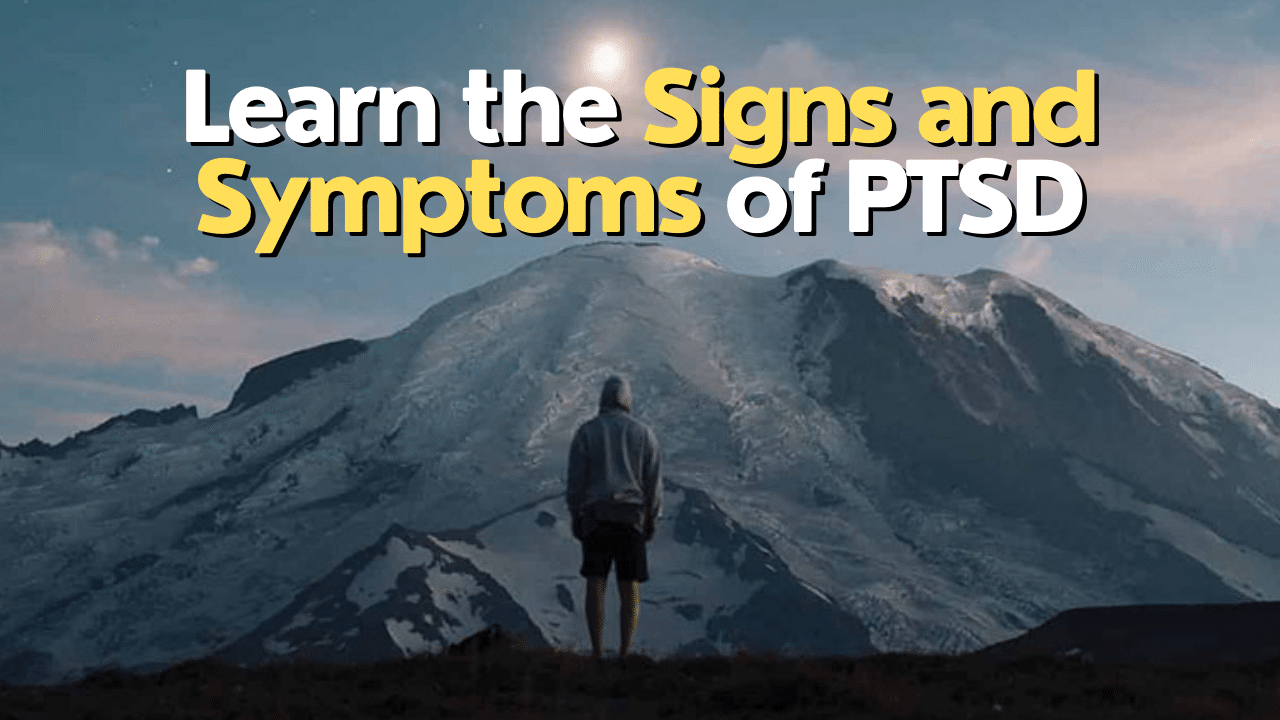
Signs of Chronic Trauma in Teens
The symptoms of chronic trauma often appear after a long time, even years after the event. These individuals may have trust issues, and hence, struggle to have stable relationships, keep a job, or do well in school.
Signs and symptoms of trauma in teens can also vary depending on the type of PTSD a teen is experiencing.
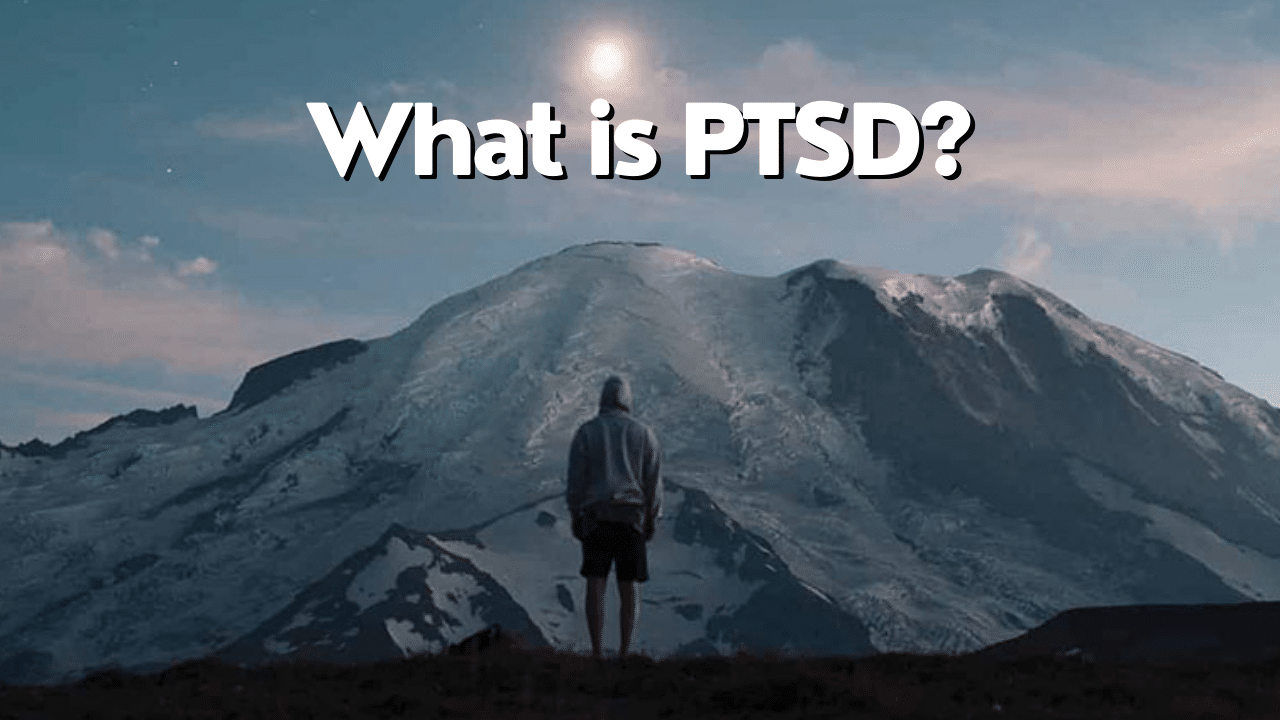
Types of PTSD in Teens
Here are some of the different subtypes of PTSD that have been proposed
It's important to note that these subtypes are not mutually exclusive, individuals can have symptoms from all subtypes, and the distinction between subtypes is not definitive, it's a way to understand the variability of PTSD symptoms. It's important to seek professional help to understand how to support someone that has experienced trauma.
How is Teen Trauma Diagnosed?
Teen trauma is typically diagnosed by a mental health professional, such as a psychologist or psychiatrist, using a combination of methods, including a clinical interview, self-report measures, and behavioral observations.
- During a clinical interview, the mental health professional will ask the teen questions about their experiences, symptoms, and medical history. They will also ask about any previous traumatic events, as well as any current or past mental health conditions.
- Self-report measures, such as a standardized questionnaire, can also be used to assess the presence and severity of trauma symptoms. These measures often ask questions about symptoms like nightmares, flashbacks, and avoidance behaviors.
- Behavioral observations can also be used to diagnose teen trauma. A mental health professional may observe a teen's behavior, interactions, and emotional responses during a therapy session or other interactions.
Diagnosis of Teen Trauma is usually based on the criteria of the Diagnostics and Statistical Manual of Mental Disorders (DSM-5) or the International Classification of Diseases (ICD-11)
It's important to note that teen trauma can be accompanied with other mental health conditions such as depression, anxiety, and substance use disorders and it's important to seek professional help to understand the nature of the problem and provide appropriate treatment.
Effects of Teenage Trauma
Trauma can have a wide range of effects on teens, including:
- Sleep Disturbances: Teens who have experienced trauma may have difficulty falling asleep or staying asleep. They may also experience nightmares or night sweats.
- Motivation: Trauma can lead to a loss of interest in activities that were once enjoyed, and can make it difficult for teens to find the motivation to complete tasks or engage in social activities.
- Technology Use: Trauma can lead to a change in technology use, some teens may use it excessively for distraction or to avoid thinking about their traumatic experiences, while others may avoid technology completely.
- Difficulty Focusing: Trauma can affect a teen's ability to focus and pay attention, making it difficult for them to complete tasks or engage in activities that require concentration.
- School Performance: Trauma can have a negative impact on a teen's school performance, making it difficult for them to keep up with their studies, retain information, and complete assignments.
- Relationships: Traumatic events can disrupt a child's ability to form a secure attachment, which is crucial for their overall physical and mental development. A secure attachment provides a sense of safety and stability, which is essential for a child's well-being and ability to form healthy relationships. Many aspects of a child's healthy growth and development rely on this primary source of security and trust.
Trauma results in a fundamental reorganization of the way the mind and brain manage perceptions. It changes not only how we think and what we think about, but also our very capacity to think.
Other mental health conditions: Trauma can also have a long-term impact on mental health, and can contribute to the development of other mental health conditions like:
- Anxiety - teens who experience trauma are 2 - 3 times more likely to develop an anxiety disorder as an adult.
- Depression - teens with a history of trauma are about 3 times more likely to experience a major depressive episode as adults
- Substance abuse - teens with a history of trauma are about 4 times more likely to develop symptoms of drug abuse
It's important to note that the effects of trauma can vary from person to person, and may manifest differently in different teenagers.

Now that we have a general understanding of the various effects that trauma can have on a teenager, let's delve deeper into some specific effects of trauma: somatization, adverse childhood experiences (ACEs), trauma flashbacks, and trauma triggers.
Our brains are wired for connection, but trauma rewires them for protection. That's why healthy relationships are difficult for wounded people.
The Body Keeps The Score: Understanding Somatization
Somatization refers to when a teen experiences emotional distress as physical symptoms or bodily issues. It's a way that the body communicates the emotional pain the person is going through.
In his book, "The Body Keeps the Score" Dr. Bessel van der Kolk, a psychiatrist and trauma expert, brought awareness to the idea that traumatic experiences are stored as somatic symptoms in the body, even after the traumatic event has ended. According to this perspective, traumatic experiences can create changes in the body's physiology, including the nervous system, hormones, and immune system, as well as in the brain. These changes can manifest as physical symptoms such as pain, headaches, or stomach problems, as well as emotional symptoms such as anxiety, depression, or anger.
The body has its own way of remembering traumatic experiences, through physiological changes that occur in the body. Even when the mind has forgotten or repressed the memory of the event, these physiological changes can continue to affect the individual's emotional and physical well-being long after the traumatic event has ended, unless the trauma is properly addressed.
Effects of Adverse Childhood Experiences (ACEs)
Repeated childhood trauma causes a child to live in a constant state of hypervigilance, always alert to impending perceived danger.
ACEs stands for Adverse Childhood Experiences. These are traumatic events that occur during childhood, such as abuse, neglect, exposure to violence, or living in a household with substance abuse or mental health issues. ACEs can have a significant impact on a child's physical, emotional, and mental health throughout their life.
- For each noted adversity, the risk for early initiation of substance abuse increases two to four times. People with five or more ACEs are seven to 10 times more likely to become substance abusers.
- Individuals with three or more traumatic childhood experiences have higher rates not just of alcohol and drug abuse, but also have an increased risk for depression, anxiety & other mental illnesses, poor academic performance, and difficulty in maintaining stable relationships and employment
- Children with a history of trauma are twice as likely to have chronic health conditions such as heart disease, diabetes, and cancer
- Additionally, ACEs can also affect brain development, which can lead to difficulty in emotional regulation, impulse control, and decision-making.
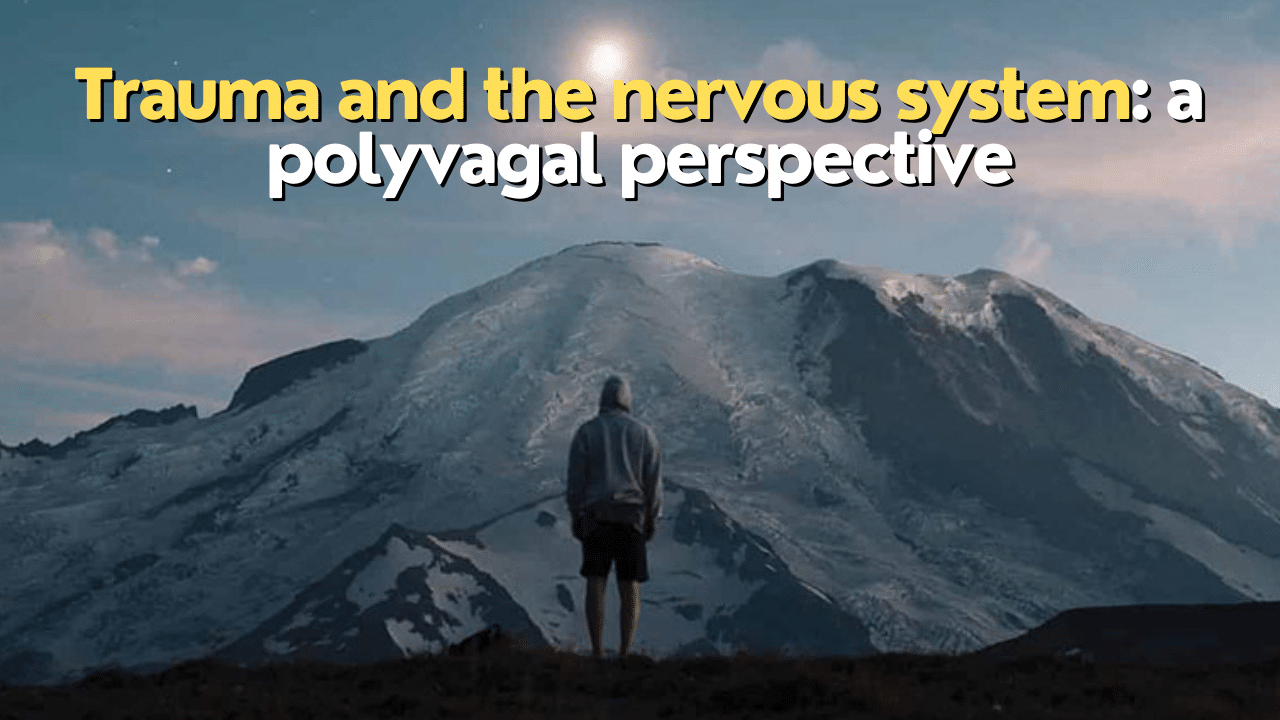
It's important to note that not all children who experience ACEs will develop these issues, and that the effects of ACEs can be mitigated by protective factors such as positive relationships with caregivers, access to good healthcare, and supportive services.
It's also important to mention that ACEs are not unique to a particular race, ethnicity, social class or culture and can happen to anyone and can be prevented with early identification, early interventions and providing appropriate support.
Understanding Trauma Flashbacks
A trauma flashback is a re-experiencing of a traumatic event in the form of vivid memories, vivid nightmares, or even hallucinations. These flashbacks can be triggered by sights, sounds, smells, or other sensory cues that remind the person of the traumatic event. Flashbacks can be distressing and disruptive and can make it difficult for a person to function in their daily life.
Flashbacks are a common symptom of post-traumatic stress disorder (PTSD) and can be experienced by anyone who has gone through a traumatic event. It's important for parents to know that their teenager experiencing flashbacks is a sign that they are still struggling to cope with the trauma they have experienced, and that they need support and help to process and heal from the trauma.
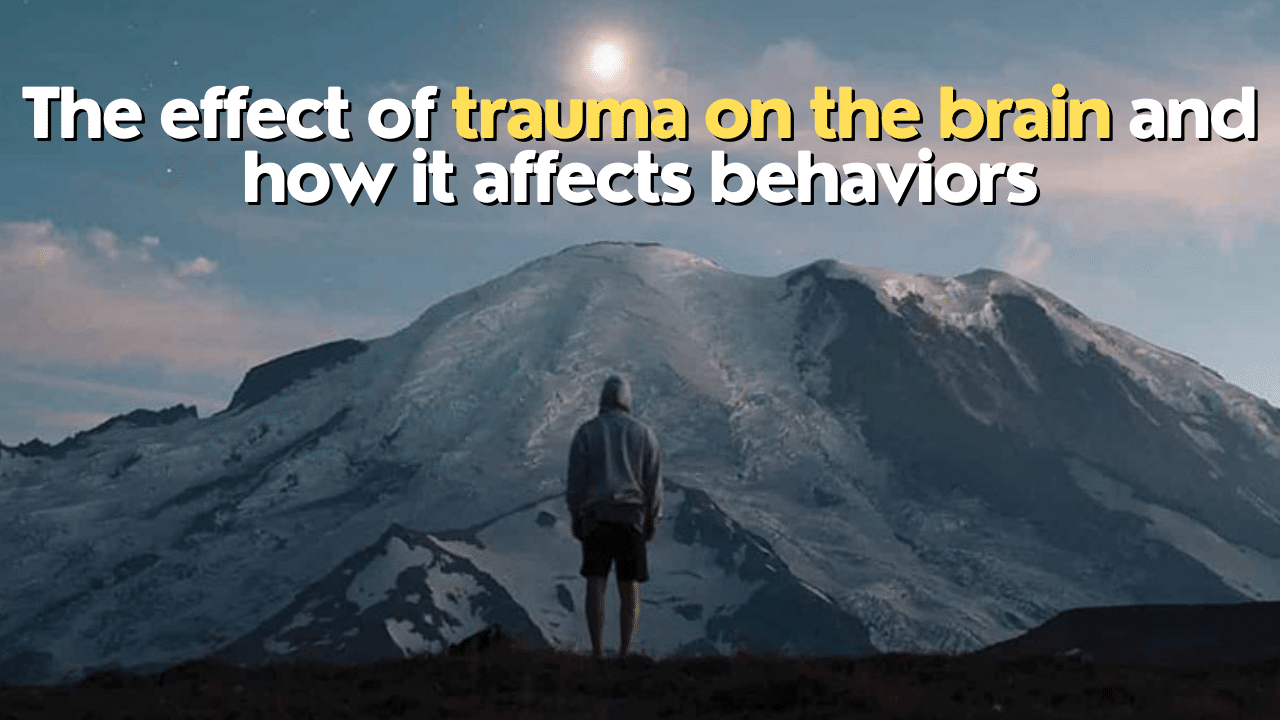
Here are some things that parents can do to help their teenager who is experiencing flashbacks:
- Validate their feelings: It's important for parents to acknowledge that their teenager is going through a difficult time and that their feelings of fear, sadness, and anger are valid. Parents do not have to fully agree or understand what their teenager is feeling in order to validate their feelings. Listening, acknowledging, and genuiely trying to understand as best as they can, allows a place of trust and healing their teenager.
- Create a safe space: Parents can help create a safe and comfortable environment for their teenager. Providing a safe space of listening and validating their teenagers emotions. This might include making sure their teenager has a place to go where they feel safe and protected, and where they can express their feelings without fear of judgment.
- Help them identify triggers: Parents can help their teenager identify triggers that may be causing their flashbacks, such as specific smells, sounds, or visual cues. Once triggers are identified, parents can help their teenager create a plan to avoid or manage them.
- Encourage them to seek professional help: Parents can support their teenagers by encouraging them to see a mental health professional who can provide them with specialized treatment and support for trauma and PTSD.
- Help them develop coping strategies: Parents can help their teenager develop coping strategies to deal with the symptoms of PTSD and flashbacks, such as deep breathing exercises, mindfulness practices, and progressive muscle relaxation. These coping strategies are important to help calm their teenagers nervous system, and allowing them to feel grounded and safe.
It's important to remember that healing from trauma takes time, patience, and support. Parents play an important role in the healing process and it is important to be patient and understanding with your teenager as they work through their trauma.
Trauma comes back as a reaction, not a memory.
Understanding Trauma Triggers
A trauma trigger is anything that activates memories of your teen's trauma and causes an emotional response. It is particular to your teen and what their experience has been. Triggered, they re-experience the feelings and behaviors they had in the traumatizing situation. These triggers can vary widely depending on the teen and the type of trauma they experienced. Often trauma is stored in a person's senses, and thus a trigger can be anything that activates one of their 5 senses. Often times a person is unaware of what may have triggered them, or even that it may relate to their past trauma. Trauma triggers have two categories: internal triggers and external triggers.
Internal Trauma Triggers
Internal trauma triggers are things that your teen feels or experiences inside their body that remind them of the traumatic event and can cause them to re-experience the emotions and feelings associated with the trauma. There may be times that your teen may not be aware that what they are expericing is related to the trauma. This is where therapy can play a big part of their healing journey allowing them to become more aware and gain insight of how to manage these triggers when they arise. Because these trauma triggers are internal, it may appear that your teen's trauma response comes "out of the blue." These triggers can be thoughts, emotions, and body sensations.
Some examples of internal trauma triggers include:
- Certain memories, thoughts, or dreams that remind them of the traumatic event
- Certain emotions such as anger, sadness, frustration, or fear, or feeling lonely, abandoned, vulnerable, out of control, trapped, or powerless
- Certain self-talk or thought patterns that remind them of the traumatic event
- Certain physical/bodily sensations such as a tightness in the chest or feeling lightheaded, a racing heart, sweating, muscle tension, or feeling pain
- Certain body postures or movements that remind them of the traumatic event
External Trauma Triggers
External trauma triggers are external events, situations, or stimuli that remind your teenager of the traumatic event and can evoke feelings of trauma. They can also just evoke extreme emotional reactions, and feelings of not being safe, while being unaware that it may be related to the trauma.
Examples of external trauma triggers include:
- Sensory triggers including certain sounds or noises, smells, tastes, textures, colors, or seeing something that remind them of the traumatic event
- Environmental triggers including certain places, people, situations or things that remind them of the traumatic event
- Relational triggers like getting in an argument or ending a relationship can bring back memories of your teen's traumatic event
- Everyday-life triggers such as reading a news article, watching a movie or TV show, or experiencing specific types of weather that remind your teen of their traumatic event
- Certain anniversaries, holidays, and dates or times of the year that remind them of the traumatic event
It's important to note that triggers can vary from person to person, and something that triggers one person may not affect another. Some people may be able to identify their triggers and avoid them, while others may not be aware of what their triggers are. Understanding and identifying the triggers can help your teen avoid or cope with their traumatic experience better.
Does My Teen Need Treatment?
Your teen is struggling. Your family is struggling. Your community does not have the resources to help. Let us help.
Teen Trauma Treatment & Care
If your teenager has experienced a traumatic event, it can be a difficult and overwhelming time for both them and you as a parent. Seeking professional help is an important step in the healing process. It can be hard to know where to start, but there are a variety of treatment options available to support your teenager as they navigate their recovery. In this section, we will explore some of the different types of treatment and care that are available to help your teenager heal from their trauma and regain a sense of safety and control in their life. Whether it's therapy, medication, or other types of support, there is hope for your teenager's recovery and for your family to heal together.

Kids with trauma history don't need more punishment. And quite frankly, they don't need more stickers.
Ways Parents Can Help Their Traumatized Teen
If your teenager has recently experienced a traumatic event, it can be overwhelming and challenging to know how to best support them in their healing process. Here are some steps you can take as a parent to help your teen cope with their trauma and begin to heal.
- Listen and validate their feelings: Allow your teenager to express their feelings and thoughts about their traumatic experience. Let them know that their feelings are valid and that you are there to support them.
- Create a safe space: Make sure your home is a safe and comfortable place for your teenager to process their trauma. This may involve removing certain items or memories that may trigger them.
- Encourage self-care: Help your teenager develop healthy coping mechanisms such as exercise, mindfulness, and relaxation techniques.
- Be patient and understanding: Trauma recovery takes time and patience. Be understanding and supportive of your teenager as they work through their healing process.
- Educate yourself: Learn more about trauma and its effects on teenagers so you can better understand your child and support them through the healing process.
- Seek community support: Look for support groups or other resources in your community that can provide additional support for your teenager. Helping your teenager realize they are not alone in their trauma can help their healing process. This can also help you as a parent as well.
- Maintain healthy communication: Keep the lines of communication open with your teenager and make sure they know they can come to you with any concerns or issues they may have.
- Be aware of triggers: Be aware of what triggers your teenager and help them avoid or manage those triggers as much as possible.
- Prioritize self-care: Remember to take care of yourself as well. Supporting your teenager can be emotionally and mentally taxing, so make sure to take care of yourself too. Make sure to take time for yourself, talk to your own therapist or counselor, and practice self-care.
- Seek professional help: Look for a therapist or counselor who specializes in treating trauma in teenagers.
It's important to remember that healing from trauma takes time and patience, and it's necessary to be gentle with yourself and your teenager as you navigate the recovery process.
When it feels disheartening to learn that trauma changes the brain, remember that healing changes the brain, too.
Should You Seek Professional Help for Your Teen's Trauma?
If you suspect that your teen may be experiencing trauma, it's important to seek professional help as soon as possible. Here are some red flags and triggers to look for that may indicate that your teen needs immediate assistance:
- Persistent and severe symptoms such as nightmares, flashbacks, and avoidance behaviors that are severely interfering with their daily life.
- Intense and prolonged emotional reactions such as depression, anxiety, or anger that last for weeks or months and severely impacts their quality of life.
- Self-harm behaviors, suicidal thoughts or attempts.
- Substance use or addiction as a way of coping.
- Behaviors endangering your teen's physical health - Difficulty sleeping, eating or maintaining personal hygiene.
- Complete abandonment of school performance.
- Sudden & severe abandonment of relationships with friends and family.
A mental health professional will be able to assess the situation, provide a diagnosis and create a treatment plan that's tailored to your teen's specific needs.
What is Trauma-Informed Treatment?
Trauma-informed care is an approach to providing services and support that recognizes the impact of trauma and prior adverse experiences on an individual's health and well-being. It seeks to understand the unique needs of individuals who have experienced trauma, and to create a safe and supportive environment in which they can heal and recover. Trauma-informed care involves understanding the prevalence and impact of trauma, recognizing the signs and symptoms of trauma, responding to and supporting individuals in a trauma-sensitive manner, and seeking to actively resist re-traumatization. This approach is used in a variety of settings, including healthcare, education, and in trauma treatment programs for teens.
A teen trauma treatment program is a specialized program designed to help teens who have experienced traumatic events cope with the emotional and psychological effects of the trauma. These programs typically include a combination of therapy, counseling, and other evidence-based interventions to address the specific needs of teens and help them process their experiences.
Trauma is a result of an overwhelming sense of danger, powerlessness, and fear. Healing is a result of feeling safe, empowered, and supported.
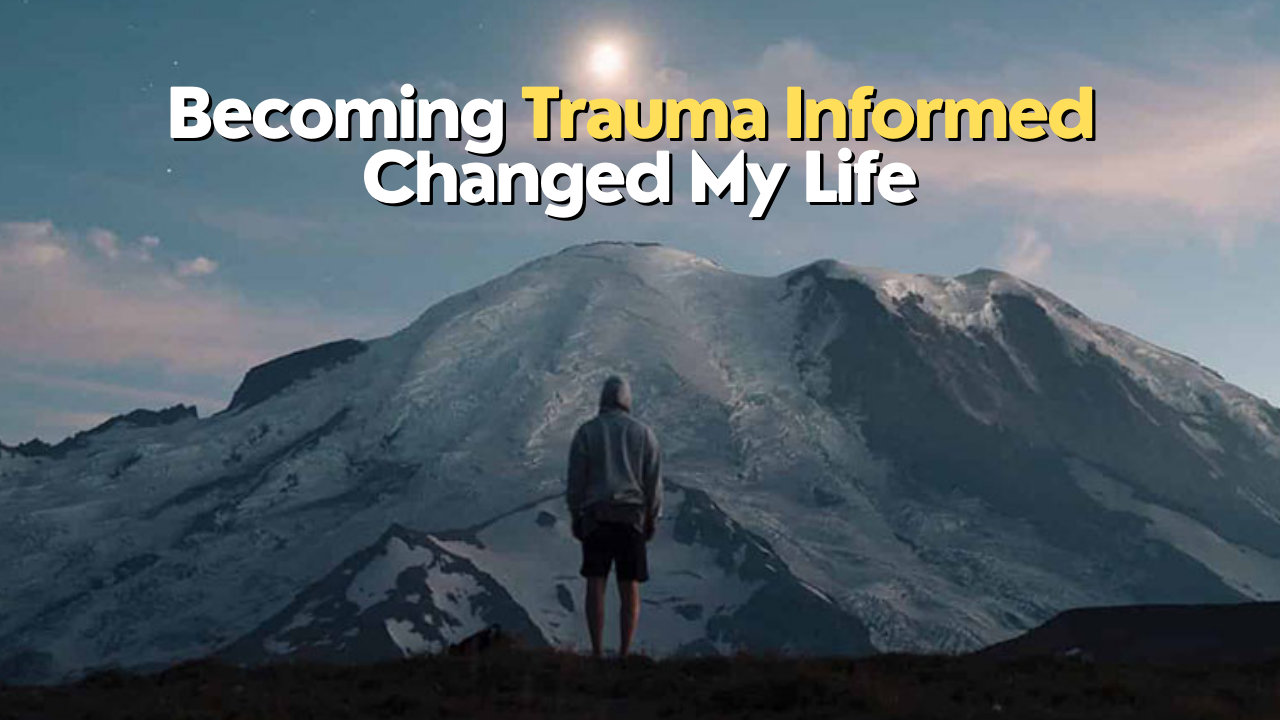
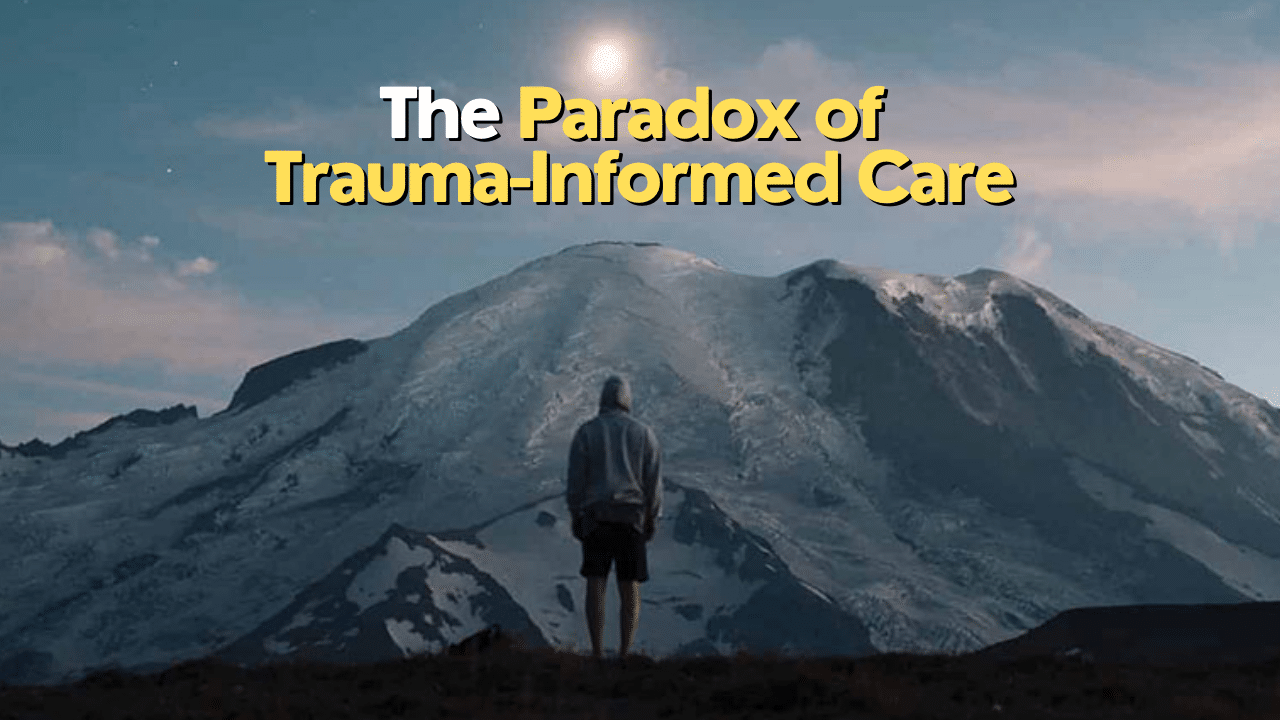
Some common types of interventions used in teen trauma treatment programs include:
Other components of a teen trauma treatment program may include group therapy, family therapy, and/or medication management. The goal of a teen trauma treatment program is to help teens heal from their traumatic experiences and regain a sense of control and stability in their lives.
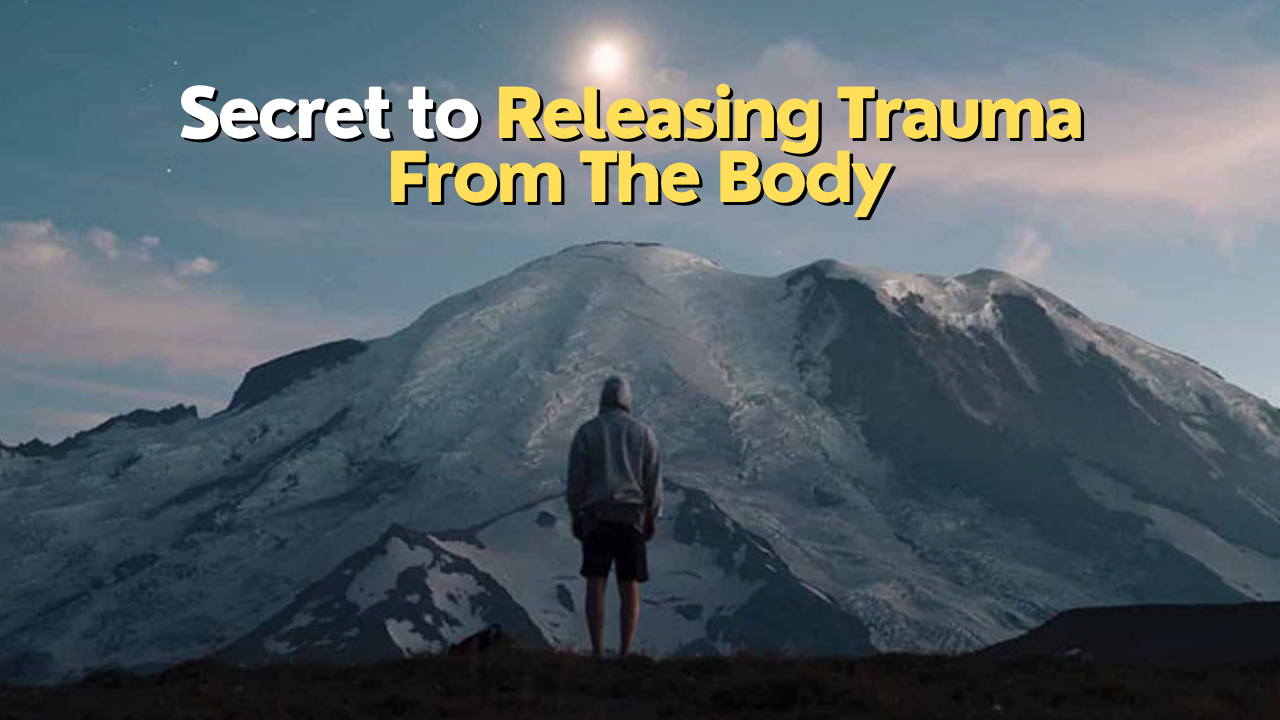
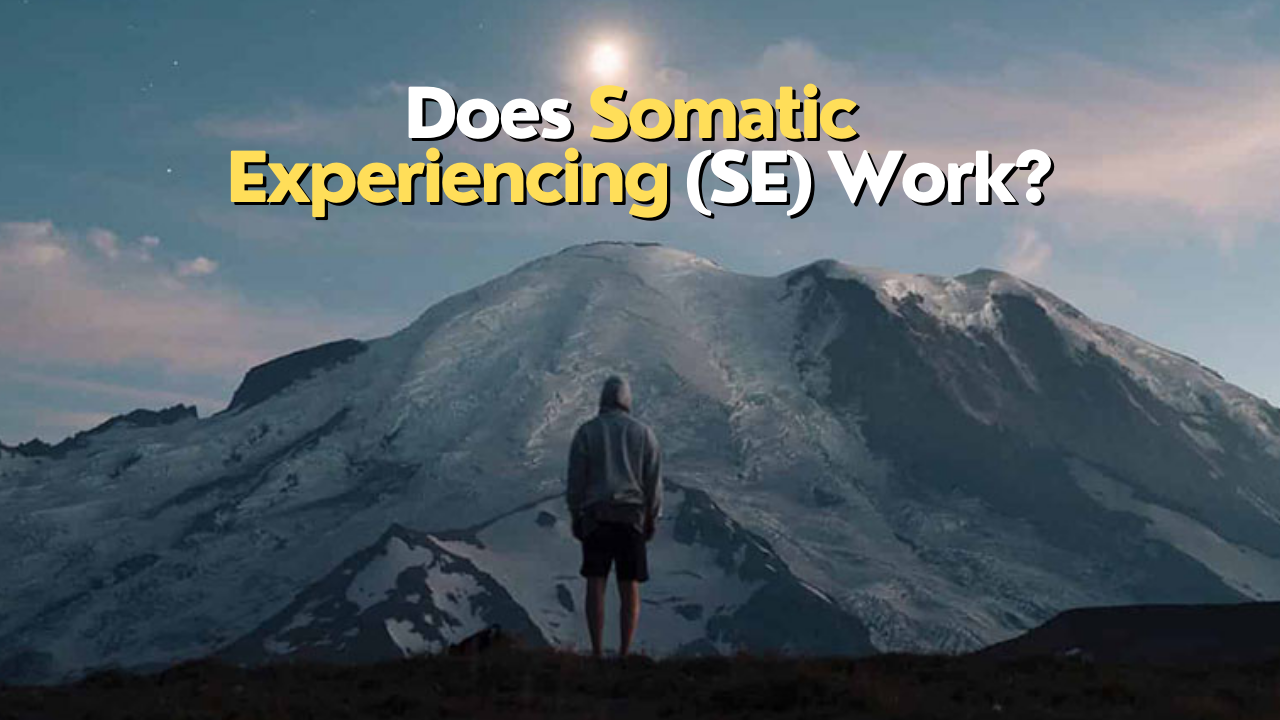
Treatment Options for Teenage Trauma
Determining the best treatment option for a teenager who has experienced trauma will depend on a variety of factors, including the severity of the trauma, the teenager's current emotional and mental state, and any co-occurring mental health conditions. Factors such as the teenager's age, developmental stage, and family dynamics will also be considered. There are several different types of treatment options available for teens who have experienced trauma. These include:
Treatment should be tailored to the specific needs of your teenager, and it is best to consult with a mental health professional to determine the best course of treatment.
Questions to Ask About Teen Trauma Treatment?
When looking for a trauma treatment program for their teenager, parents should ask mental health professionals and treatment programs the following questions:
- What is the program's approach to treating trauma?
- Is the program specifically designed for teenagers?
- What type of therapy is offered and who will be providing it?
- Does the program have experience working with trauma survivors?
- What is the length of the program and is aftercare provided?
- Is the program equipped to handle any co-occurring disorders or conditions?
- What is the staff-to-student ratio?
- What is the success rate of the program?
- Are the treatment options evidence-based and what is the program's philosophy?
- Are there any additional services offered such as family therapy or medication management?
- Are the costs of the program covered by insurance or are there any financial assistance options available?
RedCliff Ascent is a wilderness therapy program that helps traumatized teens overcome their emotional and behavioral challenges. The program is located in the remote wilderness of Utah and provides a structured and supportive environment for participants to heal and work on personal growth and self-discovery.
The program utilizes a combination of individual and group therapy, outdoor activities, and experiential learning to help teens heal from issues such as depression, anxiety, trauma, and other behavioral issues. Participants live in the wilderness for a period of several weeks and are supported by trained therapists and outdoor specialists who guide them through the program.
RedCliff Ascent is designed to help participants develop a deeper understanding of themselves, improve their communication and interpersonal skills, build self-esteem, and learn healthy coping mechanisms to manage their emotions and behaviors. The program is known for its unique approach to therapy and has helped thousands of individuals and families overcome their struggles and achieve lasting positive change.
Why Choose Wilderness Therapy To Treat Teen Trauma?
If your teenager has recently experienced a traumatic event, you may be searching for a way to help them heal and move forward. At RedCliff Ascent's wilderness therapy program, we understand the unique challenges that come with healing from trauma and we have developed a specialized program to address the specific needs of teens who have experienced trauma.
Wilderness therapy combines traditional talk therapy with the healing power of nature to provide a holistic approach to healing. Our program is led by experienced therapists who specialize in trauma recovery and our team is dedicated to providing individualized care to each of our clients.
During the program, your teenager will take part in activities such as hiking and camping as they work through their trauma with their therapist. The simplified setting provides a unique opportunity for teens to disconnect from the distractions of daily life and focus on their healing. The natural environment serves as a metaphor for the journey of healing, and the challenges faced in treatment can be applied to the challenges faced in everyday life.
One of the biggest benefits of our program is that it is designed to help teens take ownership of their healing process and develop the skills they need to continue to heal after the program is over. Our program is designed to be a stepping stone for lasting recovery and not a crutch for ongoing dependence.
We understand that choosing a treatment program for your teenager is a difficult decision and we are here to support you every step of the way. Our team is available to answer any questions you may have and to provide additional information about our program. We believe that with the right support, your teenager can heal and move forward to lead a happy and fulfilling life.
Benefits of a Wilderness Therapy for Treating Trauma
Being immersed in nature can have a profound impact on a teenager. It improves their mental, emotional, and physical health. Combined with a proven clinical approach, a therapeutic experience helps teens heal from trauma. Here are specific benefits your family can expect to see while your teen is in wilderness therapy.
Choosing a trauma treatment program for your teenager can be a daunting task, but RedCliff Ascent is here to help. With thirty years of experience and a specialized approach to wilderness therapy, we have helped countless families navigate the challenges of mental, emotional, and behavioral health issues that teens experience following a trauma.
Our program provides a safe and supportive environment for your teenager to heal, grow, and develop the skills necessary for a successful future. Don't wait any longer to give your teenager the help they need. Contact our admissions team today to learn more about our program and how we can help your family. Let RedCliff Ascent be the guide on your journey to healing and hope.
Additional References & Trauma Treatment Resources
- National Sexual Assault Hotline: 800.656.HOPE (4673)
- RAINN (Rape, Abuse & Incest National Network)
- National Child Traumatic Stress Initiative (NCTSI)
- Helping Children and Youth Who Have Traumatic Experiences
- The Body Keeps the Score: Brain, Mind, and Body in the Healing of Trauma
- What Happened to You?: Conversations on Trauma, Resilience, and Healing
- The Myth of Normal: Trauma, Illness, and Healing in a Toxic Culture
- The Deepest Well: Healing the Long-Term Effects of Childhood Trauma and Adversity
- The Complex PTSD Workbook: A Mind-Body Approach to Regaining Emotional Control and Becoming Whole

